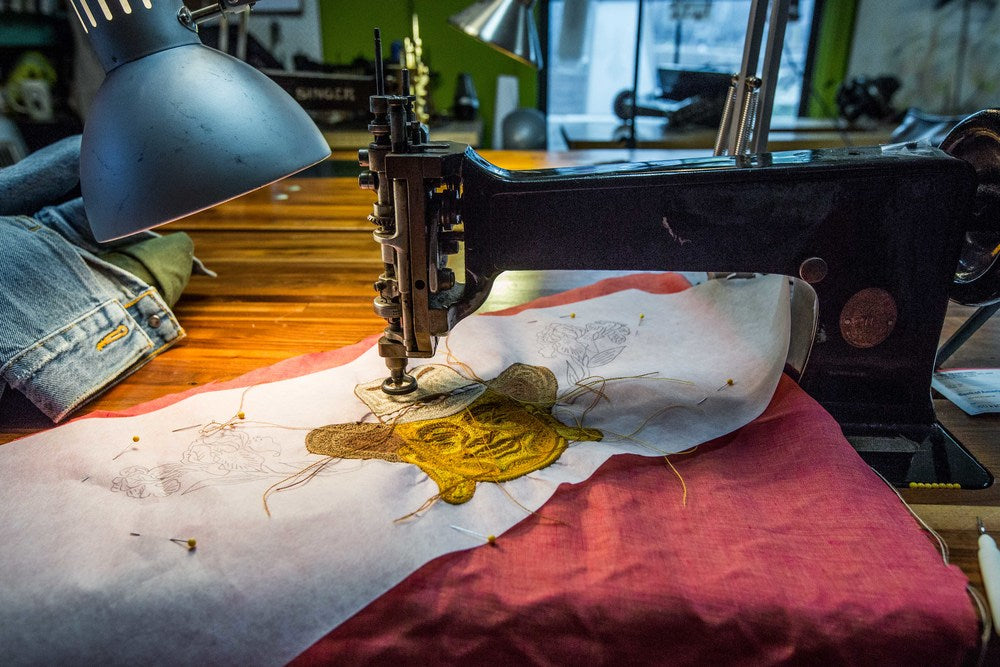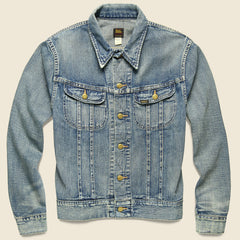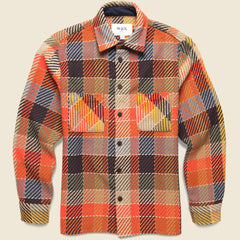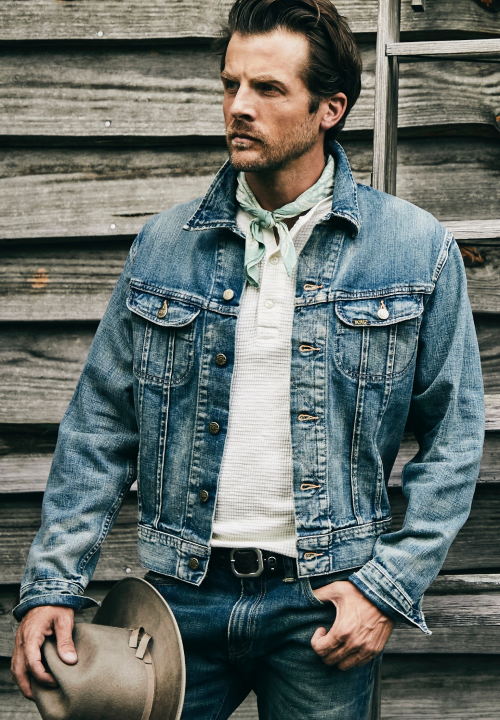The history of the Western chain stitch is both long and illustrious, with roots that go back even farther than the Old West itself. The embroidery technique is actually an ancient one, with a few rare Chinese examples, recovered from royal tombs, dating to 1100 BC. It was also the stitch employed by the very first mechanical sewing machines centuries later, although it fell out of favor in the industrial era and was replaced by the lockstitch, which lacks some of the artistic potential, but is not so easy to unravel.
It is still practiced in some traditional hand-worked designs, including, as it just so happens, Western wear. The technique was originally used to embellish and decorate Western garments, and it, alongside a lack of holes and general wear, was what distinguished a “work” shirt from a “fancy” one. The embroidery has been especially prevalent among Country Western musicians and rodeo riders, although the practice has fallen out of favor in the last few decades, as mass-produced clothing has gradually replaced the carefully-crafted garments of yore.
There are, however, a handful of artisans keeping the Western chain stitch tradition alive, including the brilliant needle-workers of Fort Lonesome in Austin, Texas. The studio does custom pieces, one at a time—they work with customers to create bespoke apparel displaying creative reinventions of traditional Western motifs. From cowboy shirts to denim jackets to patches and banners, Fort Lonesome offers tangible proof that a region’s folk art can adapt and evolve while staying true to its cultural roots.
To see more of Fort Lonesome’s chain stitch masterpieces, just click here.




















